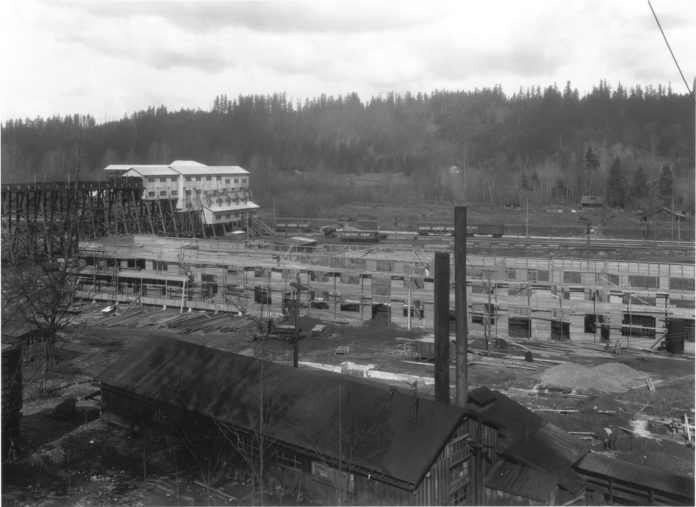This May 1927 photo of the New Black Diamond mine is looking east towards the Maple Valley Highway and Cedar River. This mine was built to replace Pacific Coast Coal’s Mine #11 which closed that same year. The New Black Diamond was colloquially known as the Indian mine, and was located near Mile Post 20 on SR 169. Underground coal mining in this area commenced in 1884, when James Colman, a prominent Seattle businessman of railroad fame, opened his Cedar Mountain mine after rail lines were extended south to Franklin. The Pacific Coast Railroad moved the coal to market and also transported miners on a daily basis to and from their homes in Black Diamond about 12 miles south. That railroad grade is now part of King County’s Cedar River trail, a 17-mile partially paved path stretching from Renton to Four Corners with planned extensions to the Green River near Flaming Geyser. The large white building at the end of the trestle was the preparation plant where coal was sorted and generally shipped by rail. The building under construction in the foreground was 310 feet long and consisted of offices, warehouse, plus electric, machine, and mine car repair shops. It was called the Pacific Coast Coal Co. Administration building. A power plant with stacks is nearest the camera. The mine closed permanently in 1941, while the shop building was sold to King County in 1948. For nearly 40 years it was known as the “King County Shops” and together with an assortment of industrial buildings it was used by its roads department. Over the past several decades the property operated for soil manufacturing and the retail sales yard of Sunset Materials. In 2016, the old King County shop building was demolished when Sunset Materials’ operations ended. The property was sold to Lakeside Industries in July 2016 for $9.5 million. Lakeside plans to relocate their existing Covington asphalt plant to this long-term industrial site. This photo No.83.10.647.5 comes courtesy of the Museum of History and Industry (MOHAI) located in south Lake Union area of Seattle.







